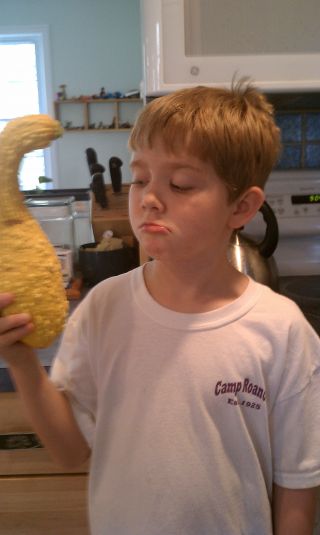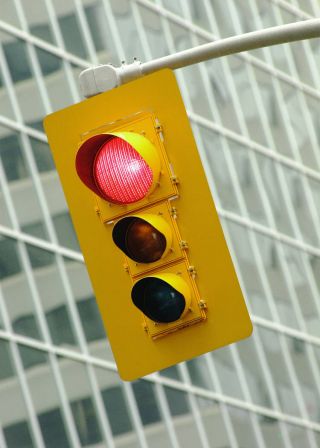Intelligence
Everyday Glimpses of Giftedness
Lesson One: It's all in asking those follow-up questions.
Posted July 18, 2012
My family and I are eating dinner. Between bites of chicken and squash we banter around the question of the day. Sometimes it’s the classic: What was the best/worst thing about your day? Sometimes it’s more along the lines of what we call “the ultimate choice” wherein we force each other to choose one of two options, providing explanation as needed or desired: Summer or winter? Beach or mountains? Past or future? Ice cream or cake? Occasionally we might even get more esoteric, venturing into the realm of the absurb: What would it take for you to give up baths for a month? How about a year? It’s not unusual for these questions to take on a life of their own, so that what was originally merely a ploy to keep our ten year old son from dwelling on his all-time favorite question—What’s for dessert?—takes on a genuine and organic life of its own. One piece of a conversation serves as a springboard for another and, before long, Brave or curious? has led us to a discussion of school and peer pressure or what the life of a astronaut might be like.

My family and I are eating dinner. Between bites of chicken and squash we banter around the question of the day. Sometimes it’s the classic: What was the best/worst thing about your day? Sometimes it’s more along the lines of what we call “the ultimate choice” wherein we force each other to choose one of two options, providing explanation as needed or desired: Summer or winter? Beach or mountains? Past or future? Ice cream or cake? Occasionally we might even get more esoteric, venturing into the realm of the absurb: What would it take for you to give up baths for a month? How about a year? It’s not unusual for these questions to take on a life of their own, so that what was originally merely a ploy to keep our ten year old son from dwelling on his all-time favorite question—What’s for dessert?—takes on a genuine and organic life of its own. One piece of a conversation serves as a springboard for another and, before long, Brave or curious? has led us to a discussion of school and peer pressure or what the life of a astronaut might be like.
I love conversations like these. We laugh; we find ourselves surprised or confused by what each of us says. Sometimes we find that we vehemently disagree; sometimes I find that I agree so much with what has been said that I honestly think I could not have phrased it better myself. Mostly I love how my wife and I stumble upon (and are reminded of) our son’s unique ways of thinking, the deep processing that he shows us as he considers a question and explains himself. But I must remind myself that these conversations, “set up” as they were with a provocative question in mind at the start of a meal, need not always be so staged.
*******
My son and I are sitting at a stop light, waiting for it to turn green. He is sipping on a fruit punch as the AC tries to cool the car, rather ineffectually at the moment. It is 101 degrees outside according to the corner bank’s digital billboard. I am hot, tired, and the fact that we are on our way to dispute a billing issue with our cell phone company has me in a cranky mood. My son says, “Red things are like caffeine.” At the moment I am deep in my own mind, playing out the upcoming conversation that I am going to have with the customer service rep at the mall. This complete non sequitor is something I might normally just nod my head to as I think of the next iteration of how the billing conversation might go. But for some reason, if only to distract myself, I decide to follow up.

My son and I are sitting at a stop light, waiting for it to turn green. He is sipping on a fruit punch as the AC tries to cool the car, rather ineffectually at the moment. It is 101 degrees outside according to the corner bank’s digital billboard. I am hot, tired, and the fact that we are on our way to dispute a billing issue with our cell phone company has me in a cranky mood. My son says, “Red things are like caffeine.” At the moment I am deep in my own mind, playing out the upcoming conversation that I am going to have with the customer service rep at the mall. This complete non sequitor is something I might normally just nod my head to as I think of the next iteration of how the billing conversation might go. But for some reason, if only to distract myself, I decide to follow up.
“Are you talking about the red light?”
Josh looks at me with an expression that indicates he thinks the question I have asked him is completely nonsensical. I note the irony and ask him to go on. He shrugs and continues. “There’s red dye in this drink, right?” He waves the bottle in front of him.
“Yes, I’m sure there is. Number five, I’d guess. It’s a classic red dye number.”
Another look, this one slightly confused, but he continues anyway. “And I’ve heard that for some kids red dye makes them waaaay more active and full of energy.”
“I guess that could be true. Where’d you hear that?”
“Oh, it’s true, Dad. My teachers say that parents are not allowed to bring red stuff to school on party days because it makes us hyper.”
“Okay.”
“So red dye is like caffeine for kids.”
Hmm. This strikes me as clever, now that I know where his thoughts were headed. I make a mental note to Google “red dye hyper” when I get home, but Josh is just getting warmed up it seems.
“And think about it,” he continues. “You’ve said it’s not good to redline an engine because you’re going too fast then. That’s using too much energy. At home, when you turn on the stove burner, it turns red because you are using energy. There’s also Red Bull—that’s an energy drink. That’s probably why they named it that way.”
“And when you run really fast with lots of energy, you get a red face,” I throw in.
My son looks at me, deadpanned expression on his face. “Dad, that’s kinda weak.”
The thing is, I see his point now. In his own way, this ten year kid has found several very different ways to connect the color red with everything from the artificial chemicals in his drink to appliance energy consumption to product name brands. And all of this in the space of a few seconds as we wait for the light to turn green. Another minute passes as I consider this and finally the light switches. As we pull through the intersection, Josh adds, “Whew! That red light was giving me energy. Like, ‘Turn green already! I wanna go!’”
********
Over the course of the next few weeks, I make a list of similar “connective” moments, places in ordinary life where I am lucky enough to catch myself not dismissing a statement or a question as mere silliness. I discover that all I really need to do is listen and ask, “How so?” or say, “I don’t follow...” in order to glimpse the everchanging landscape of my child’s mind. A few include:
- A walk through the grocery store, watching as I read and sneer at the nutrition labels on boxes of products that claim to be heart healthy, leads my son to ask: “Which is more powerful: persuasion or logic?”
- A disappointing trip to the pool on a cloudy day leads my son to remind me that, before we’d even left the house, he had warned me the trip there wouldn’t be worth it. “Dad, the thunder told us the storm was too close!” (Sure enough, by the time we’d arrived, they’d closed the gates.)
- Three minutes in a mechanical carwash, watching as the brushes and soap and water whip about us, causes my son to wonder aloud, “How did they ever think that the automatic dog washing box [at Nature’s Emporium] would ever be a good idea?” (Some of you, fellow animal lovers, might have seen these devices. If you have not then, … well, yes. The comparison between a carwash and the image you now have in mind for such a pet cleaning device is eerily accurate.)
I teach in a public education setting as a gifted education specialist. About half the time, I work directly with students, pulling them out of their regular classroom instruction for enrichment lessons. Another large chunk of my time, however, is devoted to testing and identifying students who might be in need of such services. When I am with my students as their small group teacher, it’s easy to see the connections they make between subjects, often because I have designed the lesson to assist them in doing precisely that. But it occurs to me now that there is also another take-away lesson based on what my own gifted son has taught me as a parent. During those times when I am evaluating other students for their potential placement in our county’s program, I need to slow down. I need to act as if I am sitting with that child at a red light. What a student might say to me, even in the off moments between the scripted questions, could be just as enlightening.
Don’t be afraid to take the time, to listen, and to delve deeper.




